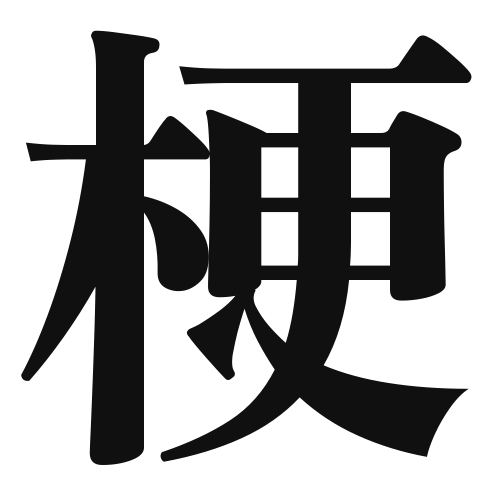1. Overview of Meaning
The kanji “梗” (pronounced “kou” or “kyo”) primarily means “stem” or “stalk” of a plant. It can also refer to a “framework” or “core” of something, often used in a metaphorical sense.
2. Formation and Radical
The kanji “梗” is a compound character (会意文字) that combines the elements of “木” (tree) and “工” (work or craft). This suggests a connection to something that is crafted from wood, like a stem or stalk.
The radical of “梗” is “木” (tree), which is commonly associated with plants and wood-related meanings.
3. Examples of Usage
Common words that include “梗” are:
- 梗概 (こうがい, kougai) – summary or outline
- 梗塞 (こうそく, kousoku) – obstruction or blockage, often used in medical contexts
Example sentences in daily conversation:
- この花の梗はとても長いです。 (Kono hana no kou wa totemo nagai desu.) – The stem of this flower is very long.
- 彼の話の梗概を教えてください。 (Kare no hanashi no kougai o oshiete kudasai.) – Please tell me the summary of his story.
4. Synonyms and Antonyms
Similar kanji with related meanings include:
- 茎 (くき, kuki) – stem, specifically referring to the part of a plant that supports leaves and flowers.
Antonyms include:
- 根 (ね, ne) – root, which refers to the part of the plant that is typically underground and anchors it.
5. Cultural and Historical Background
The kanji “梗” has connections to Japanese culture, particularly in literature and poetry, where the imagery of plants and their parts is often used to convey deeper meanings.
Proverbs and idiomatic expressions that may relate to “梗” include:
- 「根が深い」 (ne ga fukai) – meaning “deep roots,” which can imply a strong foundation or background.
